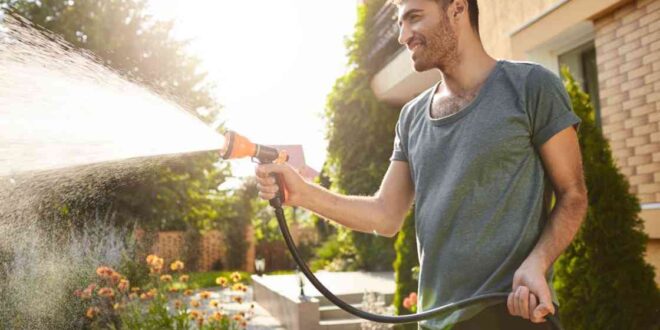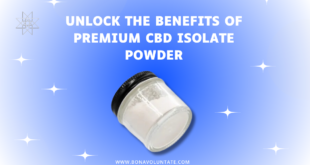Overview
Have you ever considered giving your house a little TLC after taking a look at it? Perhaps there are indications of wear and tear on the deck or the siding appears a little dirty. You’re not alone, though! Many homeowners have trouble maintaining the finest possible appearance for their houses. Pressure washing can help with it.
Pressure washing: What Is It?
Water under high pressure is used in the pressure washing procedure to clean surfaces. It’s an excellent method for cleaning the outside of your house of dirt, filth, mold, and other impurities.
How Do You Perform Pressure Washing?
The way a pressure washer operates is by applying high pressure to water through a tiny nozzle. This produces a strong water stream that can wash away filth and grime.
Benefits of Pressure Washing
Giving your house a pressure wash has several advantages. Here are just a few:
- Enhanced curb appeal: Pressure washing can give your house a fresher, cozier appearance.
- Enhanced property value: Research has indicated that pressure washing might raise your home’s worth.
- Elimination of mold, filth, and dirt: Pressure washing is a useful method for getting rid of dangerous substances from the outside of your house.
- Advantages for safety and health: Pressure washing can make your home a safer and healthier place for you and your family.
Types of Pressure Washers
Pressure washers come in three primary varieties:
- Electric pressure washers: These are the most common type of pressure washer. They are powered by electricity and are typically used for smaller jobs.
- Gas pressure washers: These are more powerful than electric pressure washers and are often used for larger jobs.
- Hot water pressure washers: These pressure washers use hot water to help remove stubborn dirt and grime.
Pressure Washer Accessories
There are many different accessories available for pressure washers. Some of the most common include:
- Pressure washer guns: These are used to control the flow of water.
- Pressure washer for roof cleaning: These are specially designed for cleaning roofs, Pressure washer for roof cleaning and come with various features to make the task easier and more efficient.
- Pressure washer wands: These are used to extend your reach.
- Pressure washer nozzles: These are used to control the pressure and spray pattern of the water.
- Pressure washer brushes: These are used to scrub surfaces.
- Pressure washer detergents: These can be used to help remove stubborn stains.
- Fixing pressure washer hose: These are used for fixing pressure washer hoses and repairing any other damaged hoses.
Pressure Washing Safety Tips
It is important to follow some safety tips when pressure washing. Here are a few:
- Wear protective gear: This includes safety glasses, gloves, and a mask.
- Keep a safe distance from surfaces: Avoid spraying people or pets.
- Select the appropriate pressure level: For fragile surfaces, use a lower pressure level.
- Be aware of electrical hazards: Do not pressure wash near electrical outlets or cords.
Pressure Washing Applications
Numerous surfaces can be cleaned with pressure washing. The following are a few of the most popular uses:
- Exterior house washing: Pressure washing can be used to clean siding, windows, and doors.
- Deck and patio cleaning: Pressure washing can be used to remove dirt, grime, and mold from decks and patios.
- Driveway and sidewalk cleaning: Pressure washing can be used to remove oil stains, grease, and other contaminants from driveways and sidewalks.
- Roof cleaning: Pressure washing can be used to remove algae, moss, and other debris from roofs.
- Fence cleaning: Pressure washing can be used to clean fences and remove mildew.
- Commercial pressure washing: Pressure washing can be used to clean a variety of commercial surfaces, such as storefronts, parking lots, and sidewalks.
Pressure Washing Tips and Tricks
Here are a few tips and tricks for pressure washing:
- Start with a lower pressure setting: You can always increase the pressure later if needed.
- Use a degreaser for stubborn stains: Apply a degreaser to stubborn stains before pressure washing.
- Rinse thoroughly: Rinse the surface thoroughly after pressure washing to remove any soap or detergent residue.
- Dry surfaces to prevent water spots: Dry surfaces with a chamois or squeegee to prevent water spots.
- Maintain your pressure washer: Regularly clean and maintain your pressure washer to ensure it’s working properly and lasts longer.
Choosing the Right Pressure Washer
Take into consideration the following aspects while selecting a pressure washer:
- Size of your home: Larger homes will require a more powerful pressure washer.
- Type of surfaces you’ll be cleaning: Some surfaces, such as brick or stone, require a higher pressure than others.
- Frequency of use: If you plan to use your pressure washer frequently, you may want to invest in a higher-quality model.
- Budget: Pressure washers can range in price from a few hundred dollars to several thousand dollars.
When to Use a Pressure Washer
In warm weather, spring or fall are the ideal seasons to pressure wash your house. On warmer days, steer clear of pressure washing because the heat can evaporate water too quickly and leave water stains.
Using a Skilled Pressure Washing Company
You can employ a professional pressure cleaning service if you don’t feel comfortable doing the pressure washing yourself. Expert pressure washers possess the knowledge and tools necessary to thoroughly clean the outside of your house in a safe and efficient manner.
Common Errors to Avoid When Pressure Washing
Although pressure washing your home can be a terrific method to make it look better from the outside, it’s crucial to avoid common blunders that could harm it or leave you with less than ideal results. Watch these errors:
- Using the wrong pressure setting: Using too high a pressure can damage surfaces, especially delicate materials like wood or vinyl siding. Always start with a lower pressure setting and gradually increase it as needed.
- Not using the right detergent: Different surfaces require different detergents. For example, a detergent designed for cleaning concrete may not be suitable for cleaning wood.
- Not rinsing thoroughly: Failing to rinse thoroughly can leave soap or detergent residue behind, which can damage surfaces or attract dirt and grime.
- Pressure washing on a hot day: Pressure washing on a hot day can cause the water to evaporate too quickly, leaving water spots. It’s best to pressure wash on a cloudy day or in the early morning or late evening when the temperatures are cooler.
- Neglecting to maintain your pressure washer: Regular maintenance is essential for keeping your pressure washer in good working condition. This includes cleaning the filter, replacing worn parts, and checking for leaks.
Conclusion
Pressure washing is a versatile and effective tool for cleaning a variety of surfaces around your home. By following the tips and tricks in this guide, you can safely and effectively improve your home’s curb appeal. Remember to choose the right pressure washer for your needs, use the correct pressure setting and detergent, and maintain your equipment regularly. With a little care and attention, you can enjoy the benefits of pressure washing for years to come.
 Personal Finance and Attractive Interest Rates Unlock Smart Savings with Low Rates and Expert Financial Tips
Personal Finance and Attractive Interest Rates Unlock Smart Savings with Low Rates and Expert Financial Tips







